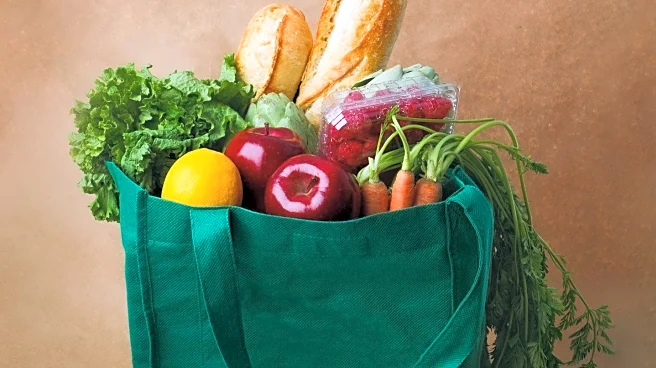What's Happening?
WAFB reports that Americans are facing significant increases in grocery costs, with food prices rising 24% from 2020 to 2024. Factors such as inflation, tariffs, and extreme weather have contributed to the surge in prices, with coffee prices alone increasing by 45% year over year. To help consumers manage their food budgets, WAFB provides practical tips, including shopping with a plan, opting for generic brands, and considering meatless meals. Additionally, consumers are encouraged to store groceries properly to reduce waste and join store loyalty programs for discounts.
Why It's Important?
The rising cost of groceries poses challenges for American households, impacting disposable income and financial stability. As food prices continue to climb, consumers may need to adjust spending habits and explore cost-saving strategies to maintain their standard of living. The situation highlights broader economic issues, including inflationary pressures and supply chain disruptions, which affect consumer behavior and market dynamics. By adopting recommended strategies, consumers can mitigate the impact of rising costs and contribute to more sustainable consumption patterns.
What's Next?
As grocery prices remain high, consumers may increasingly turn to alternative sources of support, such as food banks and SNAP benefits, to manage expenses. Policymakers and industry stakeholders may need to address underlying factors contributing to price increases, such as supply chain inefficiencies and climate-related disruptions. Continued monitoring of economic indicators and consumer trends will be essential in developing effective responses to the challenges posed by rising food costs.













